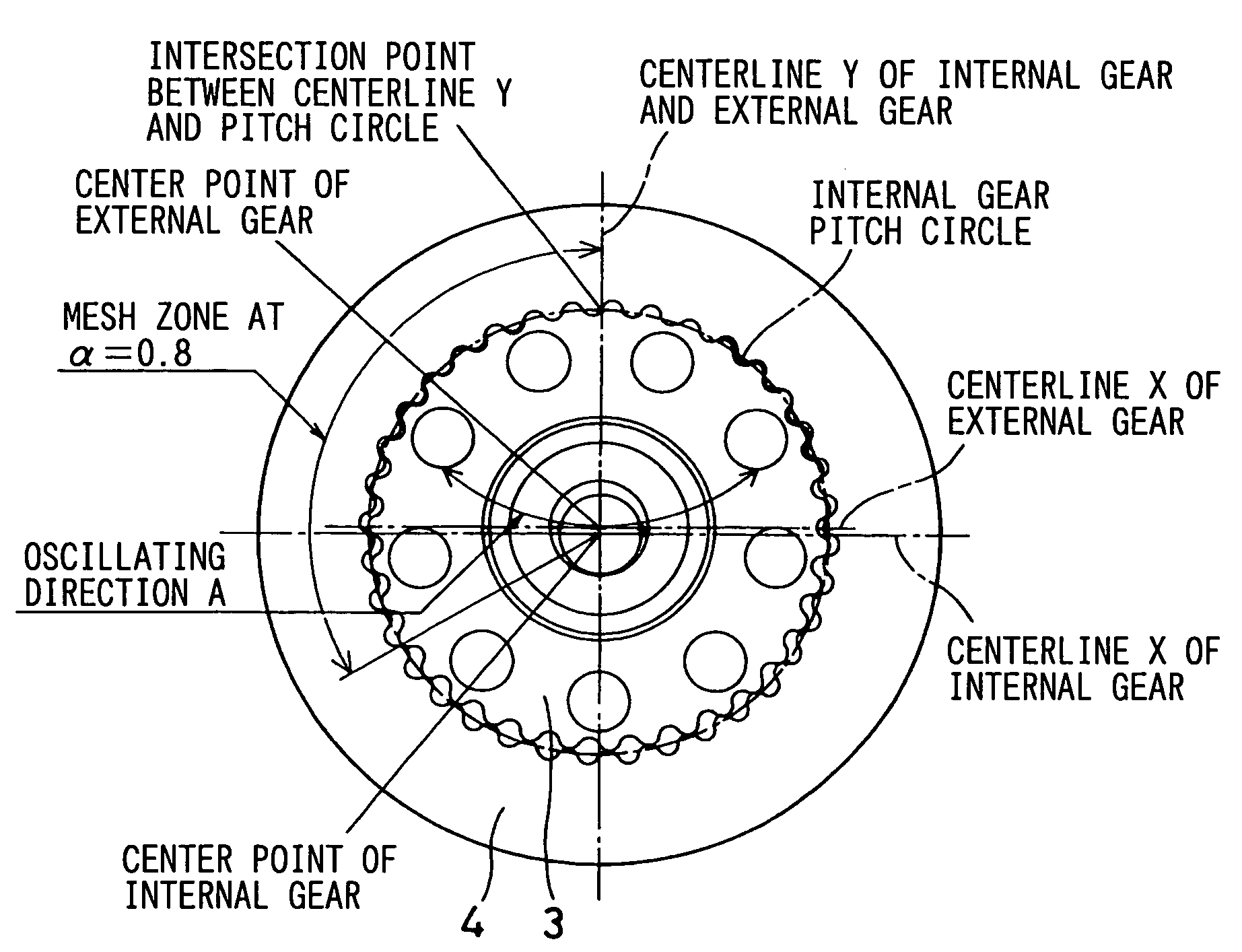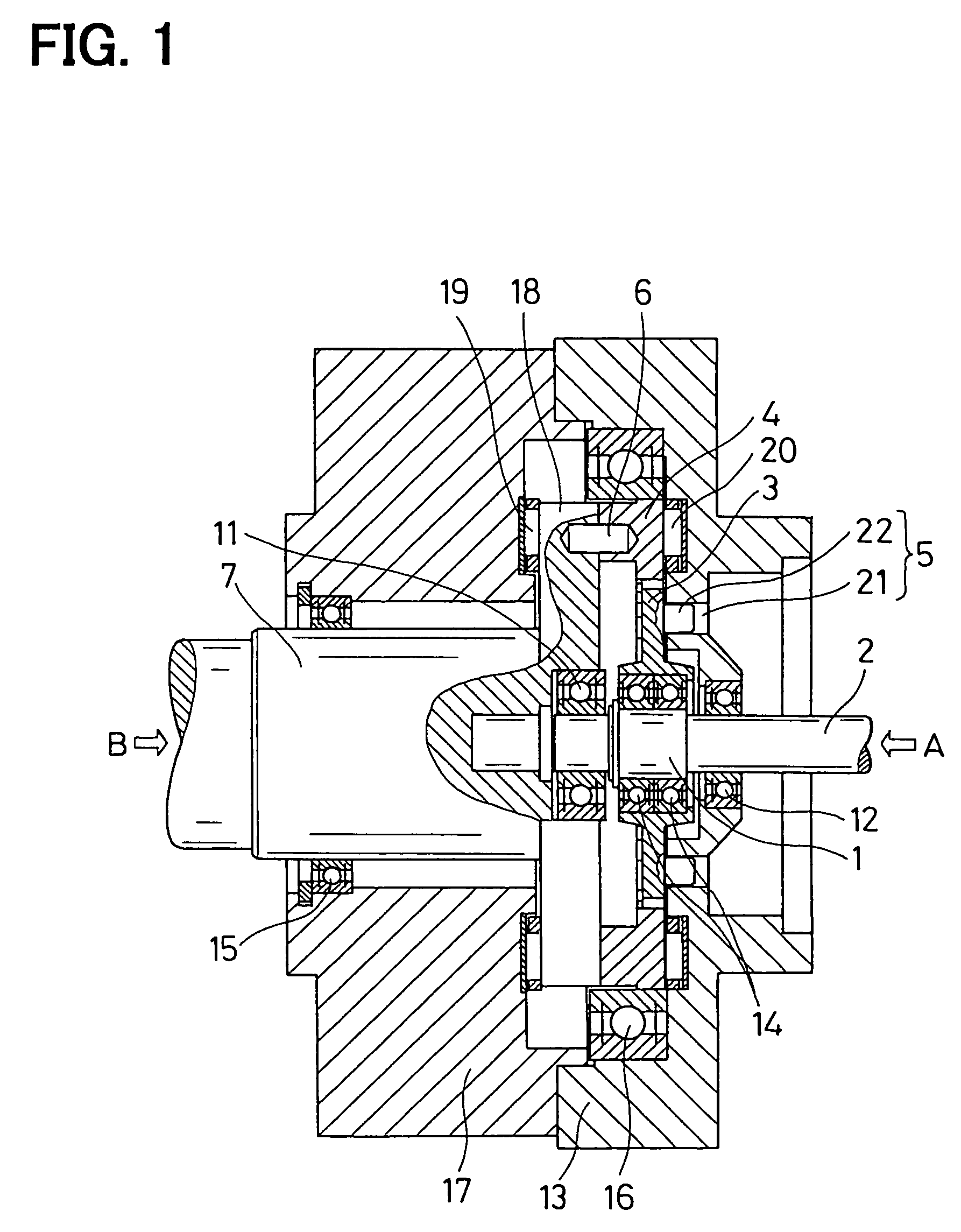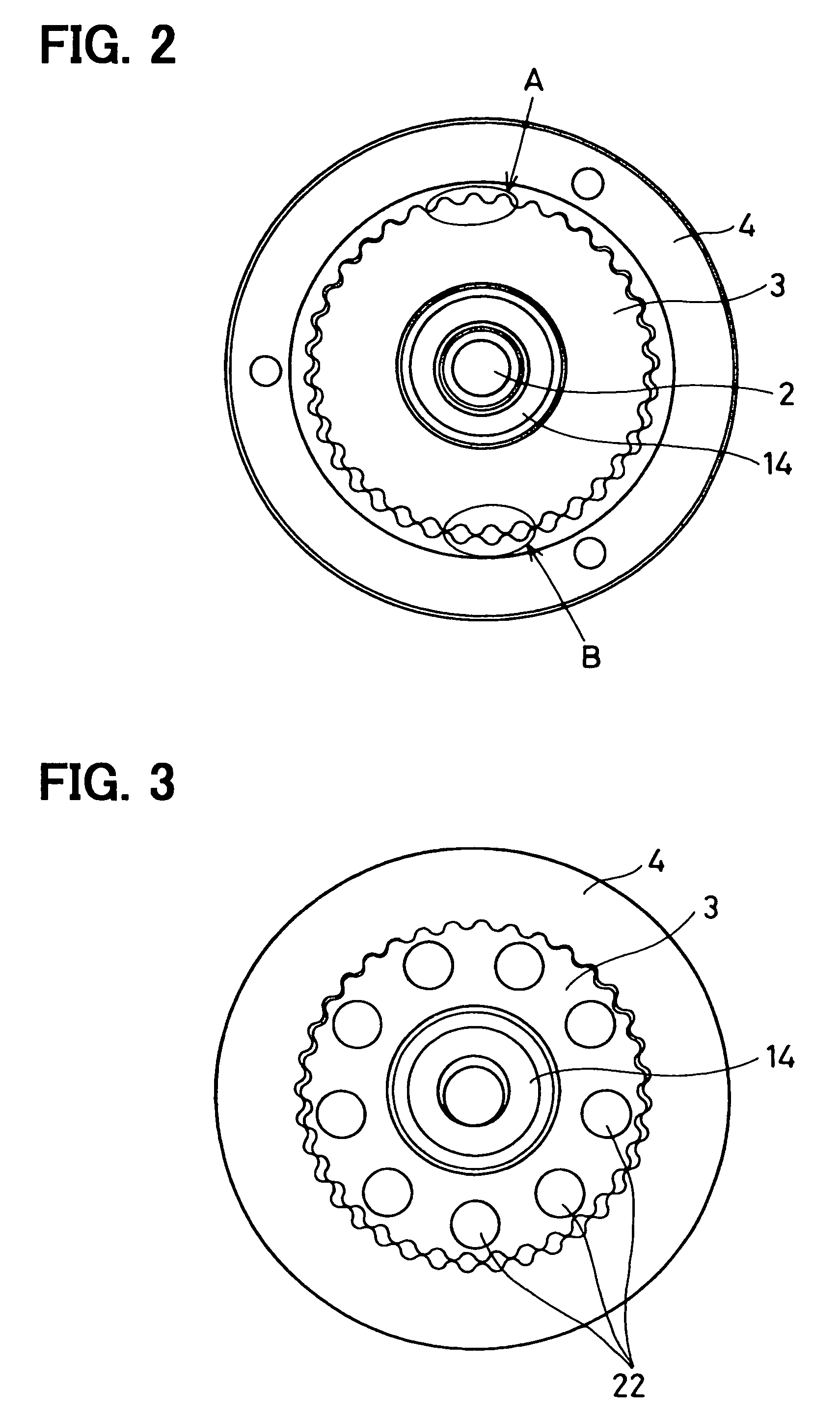Internal planetary gear mechanism
a planetary gear and gear mechanism technology, applied in the direction of gearing, gearing elements, hoisting equipment, etc., can solve the problems of increasing the transmission loss of turning force, increasing the disadvantageous loss of sliding contact, and increasing the distance between the center of the external gear and the center of the internal gear to reduce the load on the bearing or the tooth surface of the gear, etc., to improve the endurance of the gear, improve the mechanical efficiency, and improve the effect of mechanical efficiency
- Summary
- Abstract
- Description
- Claims
- Application Information
AI Technical Summary
Benefits of technology
Problems solved by technology
Method used
Image
Examples
embodiment 1
[0068]An internal planetary gear mechanism, to which teachings of the present invention are applied, will be described with reference to FIGS. 1 to 17. In this first Embodiment, the left side in FIG. 1 is referred to as the front and the right side is referred to as the rear, for convenience.
[0069]First, a schematic structure of the internal planetary gear mechanism will be described with reference to FIGS. 1 to 5. The internal planetary gear mechanism according to Embodiment 1 is used as a reduction gear. The internal planetary gear mechanism includes a first shaft 2 provided with an eccentric part 1, an external gear 3 rotatably provided around the eccentric part 1 through a bearing (a third roller bearing 14 described below), an internal gear 4 in internal mesh with the external gear 3, anti-rotation means 5 for regulating an rotational operation of the external gear 3, and a second shaft 7 connected to the internal gear 4 through a knock pin 6.
[0070]If the internal planetary gea...
PUM
 Login to View More
Login to View More Abstract
Description
Claims
Application Information
 Login to View More
Login to View More - R&D
- Intellectual Property
- Life Sciences
- Materials
- Tech Scout
- Unparalleled Data Quality
- Higher Quality Content
- 60% Fewer Hallucinations
Browse by: Latest US Patents, China's latest patents, Technical Efficacy Thesaurus, Application Domain, Technology Topic, Popular Technical Reports.
© 2025 PatSnap. All rights reserved.Legal|Privacy policy|Modern Slavery Act Transparency Statement|Sitemap|About US| Contact US: help@patsnap.com



